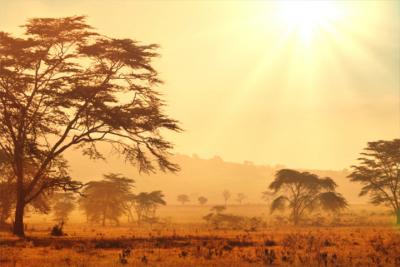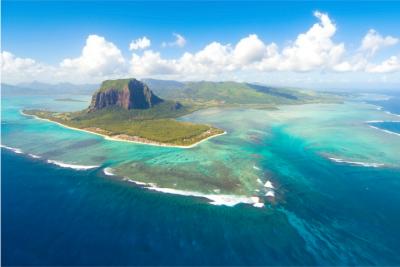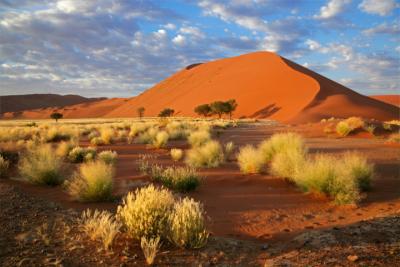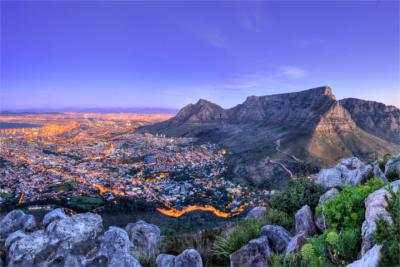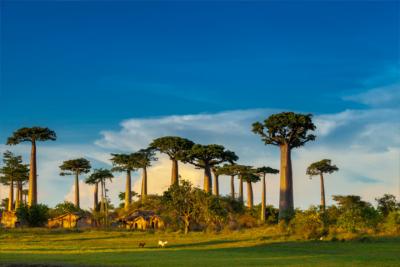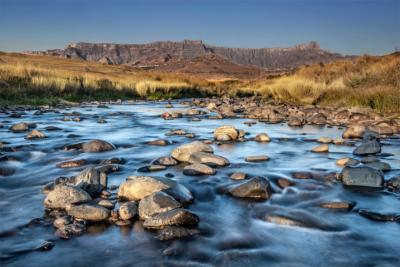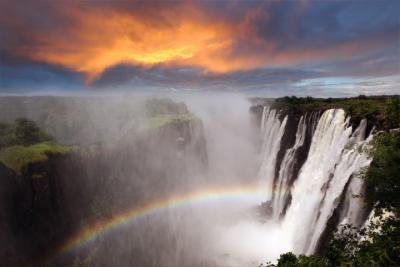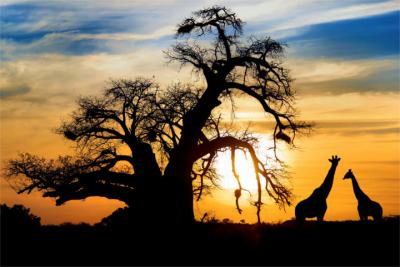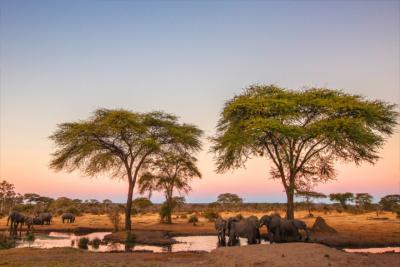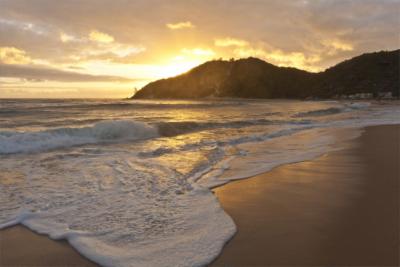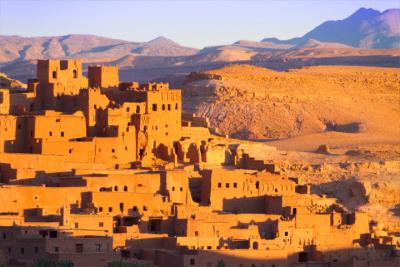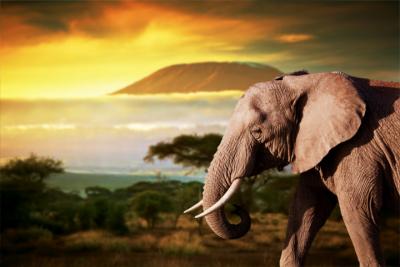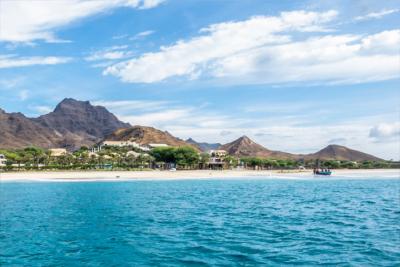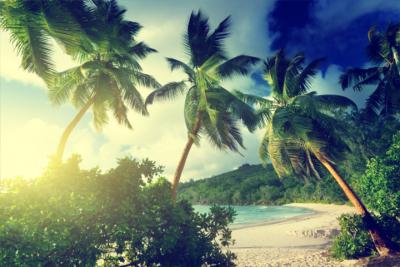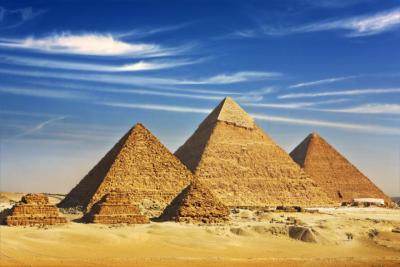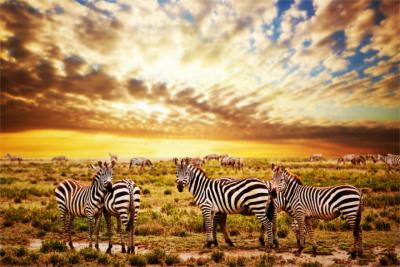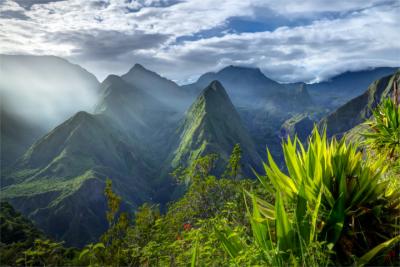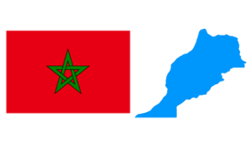Travel Offers
Travelmyne Featureprint
Distance
Morocco - A Flood of Exotic Impressions
Winding alleys, muezzins calling people to prayer and lively street markets – Morocco is a country full of exotic impressions. Oriental, African and European influences meet here and create a colourful, unique mix. Morocco's landscapes, which are covered in deserts, steppes, mountains, sandy beaches and forests, are as diverse as its culture.

Geography - In Africa's north-west
Morocco is located in the north-west of Africa and is separated from Europe by the Strait of Gibraltar. The rugged Rif mountains run along the Mediterranean Sea and form steep, stony coasts. At the Atlantic Ocean in the west, on the other hand, you find flat regions. The mighty peaks of the Atlas Mountains cross the country diagonally. Tableland, fertile, well-watered plains and deserts also belong to Morocco. The climate ranges from Mediterranean to dry Sahara climate.

Nature - Two different worlds separated by the Atlas Mountains
The harsh Atlas Mountains divide the country into two regions with entirely different landscapes. North-west of the Atlas you find Mediterranean areas, which are vegetated by stone pines, cedars and oaks, stretching into the mountains. Small lakes, date plantations and pasture also dominate the picture. The mountains are populated by Barbary macaques and many birds of prey. Inhospitable deserts characterise Morocco's landscape in the south-east. Steppes with grasses and pricky shrubs, which alternate with salt lakes, or the vast plains of the Sahara consisting of yellow-red sand, are typical of these regions. Despite its hostility to life, this environment is home to desert lynxes, hyenas, fennec foxes, numerous reptiles and snakes.

Natural sights - Impressive diversity
A unique destination is the Strait of Gibraltar, which separates Europe and Africa. At Cap Spartel, the gate to the Strait of Gibraltar, and the city Tangier, which is 14 kilometres away from Europe, you have a view of the old continent. You also see the scenic bay, which is crossed by numerous fishing boats. Monkeys populate the coast. Close by, the Caves of Hercules fascinate with their impressive underground rock formations. Those who want to get to know Morocco's nature should visit the Souss-Massa National Park. Its landscapes contain coasts, at which birds breed, deserts crossed by cactuses and cedar grasses as well as savannas with antelopes and gazelles. The Haut Atlas Oriental National Park is characterised by the harsh world of the Atlas Mountains. The range around the Toubkal, the country's highest mountain (4,167 m), is a protected area. Its peak is also popular with mountaineers as an easy route. Those who want to see spectacular rock formations should not miss out on the gorges Cirque de Jaffar, Dades and Todra. The Ifrane National Park contains beautiful, vast cedar forests, which are populated by Barbary macaques. You can experience the desert world and the magnificent, giant sand dunes of the Sahara starting from the village Merzouga, where many desert films have been shot. Visitors have a great view of the Draa valley and the desert from Mount Zagora. In Tinghir, which accommodates the distinctive multi-storey clay houses, you experience the beautiful nature of the oases in the middle of the barren desert. The city Agadir, which is fully developed for tourists, is known for its wonderful, wide beach promenade and offers great conditions for tours into the surrounding regions. You can take walks along the Legzira Beach starting from the city Sidi Ifni to see impressive rock formations. Tétouan also has beautiful beaches.

Culture - Different peoples and ethnic groups
The tribes of the Berbers already lived on Morocco's territory 4,000 years ago. Around the 12th century BC the Phoenicians founded significant trade centres at the coast. Later on, the region was part of the Roman and then of the Arab Empire. During colonial times France, Spain and Portugal fought over Morocco. After the country had gained independence in 1956 it became a constitutional monarchy. Today Morocco is mostly shaped by Arab influences but it generally contains a great mix of peoples and ethnic groups. Rhythmic dances, accompanied by drums and lutes made of turtle shells or wood are typical of Morocco. Travellers can watch this at the Gnaoua Music Festival, which takes place in June every year. A few of the inhabitants still live the hard and primitive life of the nomads.

Cultural sights - Out and about in Marrakesh, Rabat and Fes
The whole country is full of impressive history-charged testimonies, which let visitors dive into the fascinating world of the Orient. On a stroll through Marrakesh's ("the Red City") winding, mazy alleys you feel transported to a different time. The magnificent Saadian Tombs from the 16th century display the glory of bygone times. You should also not miss out on the Bahia Palace, the former Islamic school Ben Youssef Madrasa, numerous mosques and the well-known camel market. An oriental adventure is a trip to the Jemaa el Fna in Marrakesh, which is visited by many snake charmers, fortune tellers, fire-eaters, acrobats and storytellers. Worth seeing are the wonderful gardens (for example the Menara gardens) and parks. Morocco's capital Rabat also accommodates a great number of sights. This kingdom from the 12th century holds many historical buildings and mighty gates, especially in its centre. The gate in the beautiful district Kasbah of the Udayas is worth a visit. The reddish brown Hassan Tower from the 12th century, which is 44 metres high and part of an incomplete mosque, shows the population's religiousness and their aspiration after more and more ostentatious buildings. Due to its beautiful beaches and the nearby Mamora forest, Rabat is a popular destination for relaxation. You should visit the oldest royal city Fes on your journey through Morocco. Its historical treasures are the old medina of Fes, the royal residence, the Place an-Nejjarine, a medieval Islamic school and many mosques. Fes also has one of the world's greatest markets. The city Meknes is known mainly for its town wall, which is 15 kilometres long, and characterised by the magnificent Bab Mansour gate, numerous towers and fortresses. The modern seaport city Casablanca is Morocco's greatest city and its economic centre. The pearly-white houses, which you can stroll along accompanied by the refreshing breeze of the Atlantic Ocean, are typical of the former French metropolis. Travellers can relax in the parks of the Arab League with their promenades and cafes. As you would expect of Morocco, Casablanca also holds interesting sights which are steeped in history. One of them is the Hassan II Mosque, the city's landmark, and the old part of town with its town wall and the typical oriental maze of alleys.

Experience - Diving into an oriental world
Arab and European influences created an extraordinary cuisine in the country, which is characterised by a great variety of ingredients and ways of preparation. Couscous, which is made of millet or wheat semolina with chicken, lamb or vegetables and then highly seasoned, and the meat stew tajine, which is prepared in a special pot, are two of the national dishes. Almond pastries and sweet couscous are typical desserts. Furthermore, the country produces very exquisite wines. Morocco offers numerous opportunities of diving into the oriental world – be it a sweat-inducing visit to the steam bath Hamam, watching carpet makers at work, enjoying a mint tea or looking around on the legendary markets, the souks. The markets are a world of their own. They flood the visitor with exotic impressions: the smell of spices, the noisy advertising of the traders and the colourful stalls with fruit and numerous foreign goods. You find such characteristic products as Berber carpets, gold jewellery, original tajine pots, spices, olive oil from the argan tree or ceramic ware with the typical blue white patterns here. Visitors gain a first-rate insight into the African culture on a visit to the village Khamlia in the country's south-east, in which traditional music is celebrated. Morocco also offers nighttime entertainment. There are discos, casinos, clubs and restaurants, especially in the big and tourist cities. Belly dance performances are another a great experience.
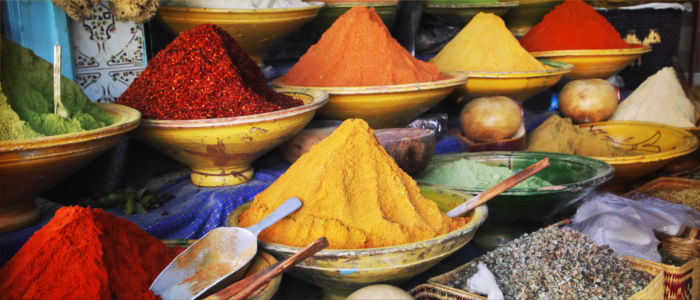
Activities - Moving about on camels
Protected bays and beaches invite visitors to relax in the sun. Swimming, diving, surfing, boating and fishing are also possible here. Morocco's wild, native landscapes offer great conditions for trips into nature. You can go hiking, climbing and cycling. Another popular activity is desert trekking. The harsh, unique world of the desert can be explored by Jeep, quad bike or on the back of a camel. Several fully-developed regions are suited for winter sports, with March as the most popular month, and skiing is often possible until June. Especially cross-country skiers get their money's worth in Morocco. In summer the mountains offer wonderful conditions for long hikes or tours on the back of a mule. You find many first-rate golf courses in this country.

Information
Tourists often use the airports in Marrakesh (RAK), Agadir (AGA), Rabat (RBA) or Casablanca (CMN). From Europe you can also travel to Morocco by car, bus or ship. There are many car rentals but you can also take the buses or taxis to move within or between cities. The official language is Arabic but French is also commonly spoken.
Morocco is a travel destination which caters for many tastes. Travellers who want to get to know the oriental-African culture are in the right place here. Morocco is also ideally suited for those who want to explore such fascinating landscapes as deserts, steppes, mountains and fertile Mediterranean regions. In addition, the beautiful beaches offer excellent conditions for holidaymakers who want to relax or be active in pleasantly warm weather.

